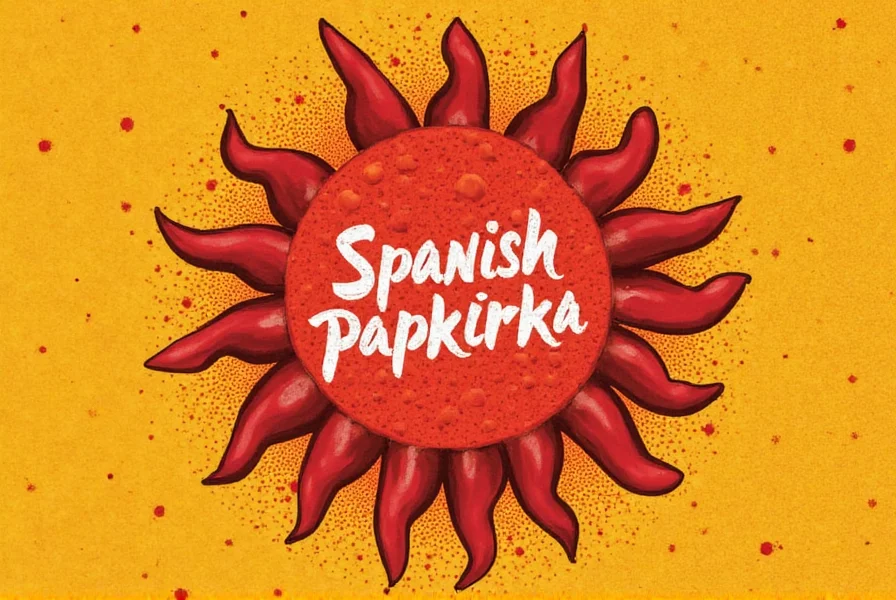What Is Spanish Paprika?
If you've ever wondered what gives paella its vibrant red hue or that smoky depth to a chorizo sausage, the answer might just be Spanish paprika. But what exactly is this spice that's become synonymous with Spanish cuisine and beloved around the globe?
Table of Contents
- Introduction: The Spice That Paints a Thousand Dishes
- A Brief History of Spanish Paprika
- Types of Spanish Paprika
- How Spanish Paprika Is Made
- Flavor Profile of Spanish Paprika
- Cooking Tips & Recipe Ideas
- Buying Guide: Choosing the Best Spanish Paprika
- Conclusion: Spice Up Your Kitchen With Spanish Paprika
Introduction: The Spice That Paints a Thousand Dishes
Spanish paprika, known locally as pimentón de la Vera, isn't just a spice — it's a culinary tradition. Derived from dried sweet peppers (Capsicum annuum), this vivid red powder brings warmth, color, and complexity to dishes ranging from rustic stews to gourmet sauces.
A Brief History of Spanish Paprika
Paprika made its way to Europe via the New World after Christopher Columbus brought chili peppers back from the Americas in the late 15th century. But it was in Spain where paprika found its true calling — especially in the region of Extremadura, home to the town of La Vera, where it is still smoked over oak fires to this day.
Types of Spanish Paprika
One of the most fascinating aspects of Spanish paprika is its variety. There are three main types, each offering a different flavor profile:
| Type | Description | Heat Level | Best For |
|---|---|---|---|
| Dulce (Sweet) | Mild, slightly fruity, and sweet | Low | Soups, rice dishes, sauces |
| Bicado (Bitter or Bittersweet) | A balance between sweet and hot | Moderate | Stews, marinades, rubs |
| Agridulce (Hot) | Spicy, smoky, bold | High | Chorizo, grilled meats, fiery sauces |
How Spanish Paprika Is Made
The process of making Spanish paprika is as unique as its flavor. After harvesting, the peppers are dried slowly in special smokehouses using oak wood, giving them that signature smoky aroma. Once dried, they're ground into a fine powder that retains both flavor and color.
Flavor Profile of Spanish Paprika
Depending on the type, Spanish paprika can offer:
- Sweetness reminiscent of ripe bell peppers
- Earthy and smoky notes
- Spicy kick that varies by type
- Rich umami depth perfect for savory dishes
Cooking Tips & Recipe Ideas
Whether you're a seasoned chef or a weekend warrior in the kitchen, here are some handy tips to get the most out of your Spanish paprika:
- Add early: Unlike many spices, paprika benefits from slow cooking, allowing flavors to meld and develop.
- Pair wisely: It works beautifully with garlic, olive oil, tomatoes, onions, and citrus zest.
- Use in moderation: A little goes a long way — start with ½ teaspoon and adjust to taste.
- Oil bloom technique: Toast the paprika briefly in hot oil to release its full aroma before adding other ingredients.
Popular Recipes Using Spanish Paprika
- Paella Valenciana
- Patatas Bravas
- Chorizo Sausage Skillet
- Smoky Tomato Soup
- Grilled Chicken with Paprika Rub
Buying Guide: Choosing the Best Spanish Paprika
Not all paprikas are created equal. Here’s how to pick the best one for your kitchen:
| Brand | Type | Flavor Notes | Best Use | Price Range |
|---|---|---|---|---|
| Pimentón de la Vera La Dalia | Dulce | Sweet, earthy, mild | Rice, soups, seafood | $$ |
| McCormick Smoked Spanish Paprika | Agridulce (hot) | Smoky, spicy, bold | Chorizo, grilled meats | $ |
| Penzeys Smoked Hungarian Paprika | Smoked | Rich, deep smokiness | Goulash, barbecue, roasted veggies | $$$ |
| La Flor Pimentón de la Vera | Dulce | Classic Spanish flavor | Authentic tapas, saffron rice | $$ |
| Badia Spanish Paprika | Dulce | Mild, slightly floral | Creamy sauces, deviled eggs | $ |
Key Features to Look For
- Origin: Make sure it's labeled “Pimentón de la Vera” or from Spain.
- Smoked vs. Non-smoked: Decide if you want that campfire aroma in your dish.
- Shelf life: Freshness matters. Store in a cool, dark place.
- Packaging: Opt for resealable containers or glass jars to preserve quality.

Conclusion: Spice Up Your Kitchen With Spanish Paprika
Spanish paprika is more than just a colorful garnish; it’s a bridge between tradition and innovation, bringing warmth, depth, and authenticity to your meals. Whether you’re recreating a classic paella or experimenting with fusion flavors, a pinch of pimentón could be the secret ingredient your pantry has been missing.
So next time you reach for that bottle of red gold, remember: Spanish paprika isn’t just a spice — it’s a flavor story waiting to unfold.










 浙公网安备
33010002000092号
浙公网安备
33010002000092号 浙B2-20120091-4
浙B2-20120091-4